Maths

Times Tables take-off
Our Vision
At Moss Park, we aim to empower every child to become a confident and capable mathematician. We strive to deliver an approach to teaching mathematics that emphasises a deep, sustainable understanding of concepts. Our curriculum fosters fluency in fundamental number facts and times tables, enabling children to make connections and apply their knowledge flexibly.
We believe in making mathematics meaningful and relevant. For example, our 'Moss Park Times Tables Journey' includes a carefully curated selection of countries and cities, reflecting the cultural backgrounds of our pupils and linking to other curriculum areas, such as the teaching of Spanish in Key Stage 2.
Our Aims
Develop fluency in fundamental mathematical skills and times tables to enable confident problem-solving and reasoning.
Use mathematical language to articulate their thinking clearly and effectively.
Build conceptual understanding by making connections within mathematical concepts.
Develop reasoning and problem-solving skills
Implementation
We follow a 'Mastery approach'. Our maths curriculum is based on the White Rose Maths Scheme. Lessons are designed to help children master fundamental mathematical concepts and skills, with an emphasis on fluency and problem-solving.
A typical maths lesson includes:
Daily Review
Model
Guided Practice
Independent Practice
Check for Understanding
Here's How We Create Moss Park Mathematicians: The Times Tables Journey
Times tables are a cornerstone of mathematical understanding, and we ensure they are embedded in daily practice:
Daily Counting: Times tables are taught explicitly in Years 2, 3, and 4, with connections explored through bar modelling and repeated addition.
Practise and Consolidation: Pupils practice times tables daily using times table booklets and Times Table Rockstars, both in school and at home.
Persevere and Progress: Pupils’ progress is tracked through monthly tests, and additional support is provided to ensure they meet age-related expectations.
Celebrate Success: Certificates and badges are awarded at family celebration assemblies to recognise pupils' achievements at key checkpoints, fostering a sense of accomplishment and community support.






